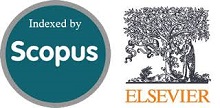Role of Slag Replacement on Strength Enhancement of One-Part High-Calcium Fly Ash Geopolymer
Abstract
Â
Doi: 10.28991/CEJ-SP2024-010-013
Full Text: PDF
Keywords
References
Davidovits, J. (1991). Geopolymers - Inorganic polymeric new materials. Journal of Thermal Analysis, 37(8), 1633–1656. doi:10.1007/BF01912193.
Cong, P., & Cheng, Y. (2021). Advances in geopolymer materials: A comprehensive review. Journal of Traffic and Transportation Engineering (English Edition), 8(3), 283–314. doi:10.1016/j.jtte.2021.03.004.
Pacheco-Torgal, F., Castro-Gomes, J., & Jalali, S. (2008). Alkali-activated binders: A review. Part 2. About materials and binders manufacture. Construction and Building Materials, 22(7), 1315–1322. doi:10.1016/j.conbuildmat.2007.03.019.
Sinsiri, T., Phoo-ngernkham, T., Sata, V., & Chindaprasirt, P. (2012). The effects of replacement fly ash with diatomite in geopolymer mortar. Computers and Concrete, 9(6), 427–437. doi:10.12989/cac.2012.9.6.427.
Duxson, P., Fernández-Jiménez, A., Provis, J. L., Lukey, G. C., Palomo, A., & van Deventer, J. S. J. (2006). Geopolymer technology: the current state of the art. Journal of Materials Science, 42(9), 2917–2933. doi:10.1007/s10853-006-0637-z.
Sukontasukkul, P., Chindaprasirt, P., Pongsopha, P., Phoo-Ngernkham, T., Tangchirapat, W., & Banthia, N. (2020). Effect of fly ash/silica fume ratio and curing condition on mechanical properties of fiber-reinforced geopolymer. Journal of Sustainable Cement-Based Materials, 9(4), 218–232. doi:10.1080/21650373.2019.1709999.
Suksiripattanapong, C., Krosoongnern, K., Thumrongvut, J., Sukontasukkul, P., Horpibulsuk, S., & Chindaprasirt, P. (2020). Properties of cellular lightweight high calcium bottom ash-portland cement geopolymer mortar. Case Studies in Construction Materials, 12. doi:10.1016/j.cscm.2020.e00337.
Yoosuk, P., Suksiripattanapong, C., Sukontasukkul, P., & Chindaprasirt, P. (2021). Properties of polypropylene fiber reinforced cellular lightweight high calcium fly ash geopolymer mortar. Case Studies in Construction Materials, 15. doi:10.1016/j.cscm.2021.e00730.
Xue, L., Zhang, Z., & Wang, H. (2021). Hydration mechanisms and durability of hybrid alkaline cements (HACs): A review. Construction and Building Materials, 266(121039). doi:10.1016/j.conbuildmat.2020.121039.
Chindaprasirt, P., Sriopas, B., Phosri, P., Yoddumrong, P., Anantakarn, K., & Kroehong, W. (2022). Hybrid high calcium fly ash alkali-activated repair material for concrete exposed to sulfate environment. Journal of Building Engineering, 45, 103590. doi:10.1016/j.jobe.2021.103590.
Detphan, S., Phiangphimai, C., Wachum, A., Hanjitsuwan, S., Phoo-Ngernkham, T., & Chindaprasirt, P. (2021). Strength development and thermal conductivity of pofa lightweight geopolymer concrete incorporating Fa and Pc. Engineering and Applied Science Research, 48(6), 718–723. doi:10.14456/easr.2021.73.
Phoo-ngernkham, T., Hanjitsuwan, S., Detphan, S., Thumrongvut, J., Suksiripattanapong, C., Damrongwiriyanupap, N., Chindaprasirt, P., & Hatanaka, S. (2018). Shear bond strength of FA-PC geopoylmer under different sand to binder ratios and sodium hydroxide concentrations. International Journal of GEOMATE, 14(42), 52–57. doi:10.21660/2018.42.7152.
Omulepu, O., & Bryan, D. J. (2010). Chapter 100 - Chemical Injuries. Plastic Surgery Secrets Plus (Second Edition), Mosby, Missouri, United States. doi:10.1016/B978-0-323-03470-8.X0001-4.
Zhang, H. Y., Liu, J. C., & Wu, B. (2021). Mechanical properties and reaction mechanism of one-part geopolymer mortars. Construction and Building Materials, 273, 121973. doi:10.1016/j.conbuildmat.2020.121973.
Tesanasin, T., Suksiripattanapong, C., Van Duc, B., Tabyang, W., Phetchuay, C., Phoo-ngernkham, T., Sukontasukkul, P., & Chindaprasirt, P. (2022). Engineering properties of marginal lateritic soil stabilized with one-part high calcium fly ash geopolymer as pavement materials. Case Studies in Construction Materials, 17. doi:10.1016/j.cscm.2022.e01328.
Phiangphimai, C., Joinok, G., Phoo-ngernkham, T., Damrongwiriyanupap, N., Hanjitsuwan, S., Suksiripattanapong, C., Sukontasukkul, P., & Chindaprasirt, P. (2023). Durability properties of novel coating material produced by alkali-activated/cement powder. Construction and Building Materials, 363, 129837. doi:10.1016/j.conbuildmat.2022.129837.
Phiangphimai, C., Joinok, G., Phoo-ngernkham, T., Hanjitsuwan, S., Damrongwiriyanupap, N., Sae-Long, W., Sukontasukkul, P., & Chindaprasirt, P. (2023). Shrinkage, compressive and bond strengths of alkali activated/cement powder for alternative coating applications. Construction and Building Materials, 400, 132631. doi:10.1016/j.conbuildmat.2023.132631.
Kogbara, R. B., Al-Zubi, A., Mortada, Y., Hammoud, A., Masad, E. A., & Khraisheh, M. K. (2024). Lime-activated one-part geopolymer mortars from construction, demolition and industrial wastes. Results in Engineering, 21(101739). doi:10.1016/j.rineng.2023.101739.
Intarabut, D., Sukontasukkul, P., Phoo-Ngernkham, T., Zhang, H., Yoo, D. Y., Limkatanyu, S., & Chindaprasirt, P. (2022). Influence of Graphene Oxide Nanoparticles on Bond-Slip Reponses between Fiber and Geopolymer Mortar. Nanomaterials, 12(6), 943. doi:10.3390/nano12060943.
Liew, Y. M., Heah, C. Y., Li, L. yuan, Jaya, N. A., Abdullah, M. M. A. B., Tan, S. J., & Hussin, K. (2017). Formation of one-part-mixing geopolymers and geopolymer ceramics from geopolymer powder. Construction and Building Materials, 156, 9–18. doi:10.1016/j.conbuildmat.2017.08.110.
Feng, D., Provis, J. L., & Van Deventer, J. S. J. (2012). Thermal activation of albite for the synthesis of one-part mix geopolymers. Journal of the American Ceramic Society, 95(2), 565–572. doi:10.1111/j.1551-2916.2011.04925.x.
Hajimohammadi, A., & van Deventer, J. S. J. (2017). Characterisation of One-Part Geopolymer Binders Made from Fly Ash. Waste and Biomass Valorization, 8(1), 225–233. doi:10.1007/s12649-016-9582-5.
Sturm, P., Gluth, G. J. G., Simon, S., Brouwers, H. J. H., & Kühne, H. C. (2016). The effect of heat treatment on the mechanical and structural properties of one-part geopolymer-zeolite composites. Thermochimica Acta, 635, 41–58. doi:10.1016/j.tca.2016.04.015.
Mohammed, B. S., Haruna, S., Wahab, M. M. A., Liew, M. S., & Haruna, A. (2019). Mechanical and microstructural properties of high calcium fly ash one-part geopolymer cement made with granular activator. Heliyon, 5(9), e02255. doi:10.1016/j.heliyon.2019.e02255.
Nematollahi, B., Sanjayan, J., & Shaikh, F. U. A. (2015). Synthesis of heat and ambient cured one-part geopolymer mixes with different grades of sodium silicate. Ceramics International, 41(4), 5696–5704. doi:10.1016/j.ceramint.2014.12.154.
Maho, B., Sukontasukkul, P., Sua-Iam, G., Sappakittipakorn, M., Intarabut, D., Suksiripattanapong, C., Chindaprasirt, P., & Limkatanyu, S. (2021). Mechanical properties and electrical resistivity of multiwall carbon nanotubes incorporated into high calcium fly ash geopolymer. Case Studies in Construction Materials, 15, e00785. doi:10.1016/j.cscm.2021.e00785.
Phoo-Ngernkham, T., Maegawa, A., Mishima, N., Hatanaka, S., & Chindaprasirt, P. (2015). Effects of sodium hydroxide and sodium silicate solutions on compressive and shear bond strengths of FA-GBFS geopolymer. Construction and Building Materials, 91(0), 1–8. doi:10.1016/j.conbuildmat.2015.05.001.
Sukontasukkul, P., Intarabut, D., Phoo-ngernkham, T., Suksiripattanapong, C., Zhang, H., & Chindaprasirt, P. (2023). Self-compacting steel fibers reinforced geopolymer: Study on mechanical properties and durability against acid and chloride attacks. Case Studies in Construction Materials, 19. doi:10.1016/j.cscm.2023.e02298.
Zheng, Z., & Deng, P. (2024). Mechanical and fracture properties of slag/steel slag-based geopolymer fully recycled aggregate concrete. Construction and Building Materials, 413(134533). doi:10.1016/j.conbuildmat.2023.134533.
Dueramae, S., Tangchirapat, W., Sukontasukkul, P., Chindaprasirt, P., & Jaturapitakkul, C. (2019). Investigation of compressive strength and microstructures of activated cement free binder from fly ash-calcium carbide residue mixture. Journal of Materials Research and Technology, 8(5), 4757–4765. doi:10.1016/j.jmrt.2019.08.022.
Yousefi Oderji, S., Chen, B., Ahmad, M. R., & Shah, S. F. A. (2019). Fresh and hardened properties of one-part fly ash-based geopolymer binders cured at room temperature: Effect of slag and alkali activators. Journal of Cleaner Production, 225, 1–10. doi:10.1016/j.jclepro.2019.03.290.
Chen, C., Shenoy, S., Pan, Y., Sasaki, K., Tian, Q., & Zhang, H. (2024). Mechanical activation of coal gasification slag for one-part geopolymer synthesis by alkali fusion and component additive method. Construction and Building Materials, 411, 134585. doi:10.1016/j.conbuildmat.2023.134585.
ASTM C618-22 (2023). Standard Specification for Coal Fly Ash and Raw or Calcined Natural Pozzolan for Use in Concrete. ASTM International, Pennsylvania, United States. doi:10.1520/C0618-22
Sarıdemir, M., & Çelikten, S. (2023). Effects of MS modulus, NA concentration and fly ash content on properties of vapour-cured geopolymer mortars exposed to high temperatures. Construction and Building Materials, 363, 129868. doi:10.1016/j.conbuildmat.2022.129868.
Humad, A. M., Kothari, A., Provis, J. L., & Cwirzen, A. (2019). The effect of blast furnace slag/fly ash ratio on setting, strength, and shrinkage of alkali-activated pastes and concretes. Frontiers in Materials, 6. doi:10.3389/fmats.2019.00009.
ASTM C191-13. (2018). Standard Test Methods for Time of Setting of Hydraulic Cement by Vicat Needle Standard Test Methods for Time of Setting of Hydraulic Cement by Vicat Needle. ASTM International, Pennsylvania, United States. doi:10.1520/C0191-13.
ASTM C109/C109M-20. (2020). Standard test method of compressive strength of hydraulic cement mortars (using 2-in. or [50 mm] cube speciments). ASTM International, Pennsylvania, United States. doi:10.1520/C0109_C0109M-20.
ASTM C348-21. (2021). Standard Test Method for Flexural Strength of Hydraulic-Cement Mortars. ASTM International, Pennsylvania, United States. doi:10.1520/C0348-21.
Lee, N. K., & Lee, H. K. (2013). Setting and mechanical properties of alkali-activated fly ash/slag concrete manufactured at room temperature. Construction and Building Materials, 47(0), 1201–1209. doi:10.1016/j.conbuildmat.2013.05.107.
Temuujin, J., van Riessen, A., & Williams, R. (2009). Influence of calcium compounds on the mechanical properties of fly ash geopolymer pastes. Journal of Hazardous Materials, 167(1–3), 82–88. doi:10.1016/j.jhazmat.2008.12.121.
Damrongwiriyanupap, N., Wongchairattana, S., Phoo-Ngernkham, T., Petcherdchoo, A., Limkatanyu, S., & Chindaprasirt, P. (2023). Influence of Recycled Glass on Strength Development of Alkali-Activated High-Calcium Fly Ash Mortar. Advances in Materials Science and Engineering, 9418619. doi:10.1155/2023/9418619.
Chindaprasirt, P., Phoo-ngernkham, T., Hanjitsuwan, S., Horpibulsuk, S., Poowancum, A., & Injorhor, B. (2018). Effect of calcium-rich compounds on setting time and strength development of alkali-activated fly ash cured at ambient temperature. Case Studies in Construction Materials, 9. doi:10.1016/j.cscm.2018.e00198.
Vikas, G., & Rao, T. D. G. (2021). Setting Time, Workability and Strength Properties of Alkali Activated Fly Ash and Slag Based Geopolymer Concrete Activated with High Silica Modulus Water Glass. Iranian Journal of Science and Technology - Transactions of Civil Engineering, 45(3), 1483–1492. doi:10.1007/s40996-021-00598-8.
Perná, I., & HanzlÃÄek, T. (2016). The setting time of a clay-slag geopolymer matrix: The influence of blast-furnace-slag addition and the mixing method. Journal of Cleaner Production, 112, 1150–1155. doi:10.1016/j.jclepro.2015.05.069.
Phoo-ngernkham, T., Hanjitsuwan, S., Li, L., Damrongwiriyanupap, N., & Chindaprasirt, P. (2019). Adhesion characterisation of Portland cement concrete and alkali-activated binders. Advances in Cement Research, 31(2), 69–79. doi:10.1680/jadcr.17.00122.
Guo, X., Shi, H., Chen, L., & Dick, W. A. (2010). Alkali-activated complex binders from class C fly ash and Ca-containing admixtures. Journal of Hazardous Materials, 173(1–3), 480–486. doi:10.1016/j.jhazmat.2009.08.110.
Yip, C. K., Lukey, G. C., & van Deventer Dean, J. S. J. (2006). Effect of Blast Furnace Slag Addition on Microstructure and Properties of Metakaolinite Geopolymeric Materials. Advances in Ceramic Matrix Composites IX, the American Ceramic Society, Ohio, United States. doi:10.1002/9781118406892.ch13.
Pacheco-Torgal, F. (2015). Introduction to Handbook of Alkali-activated Cements, Mortars and Concretes. Handbook of Alkali-Activated Cements, Mortars and Concretes, Woodhead Publishing, Sawston, United Kingdom. doi:10.1533/9781782422884.1.
Rao, G. A. (2001). Generalization of Abrams’ law for cement mortars. Cement and Concrete Research, 31(3), 495–502. doi:10.1016/S0008-8846(00)00473-7.
ACI 318-14. (2014). Building Code Requirements for Structural Concrete (ACI 318-14) and Commentary (318R-14). American Concrete Institute (ACI), Michigan, United States.
AS 3600-2009. (2009). Concrete structures Australian Standards, Sydney, Australia.
Phoo-ngernkham, T., Sata, V., Hanjitsuwan, S., Ridtirud, C., Hatanaka, S., & Chindaprasirt, P. (2016). Compressive strength, Bending and Fracture Characteristics of High Calcium Fly Ash Geopolymer Mortar Containing Portland Cement Cured at Ambient Temperature. Arabian Journal for Science and Engineering, 41(4), 1263–1271. doi:10.1007/s13369-015-1906-4.
Sofi, M., van Deventer, J. S. J., Mendis, P. A., & Lukey, G. C. (2007). Engineering properties of inorganic polymer concretes (IPCs). Cement and Concrete Research, 37(2), 251–257. doi:10.1016/j.cemconres.2006.10.008.
Pacheco-Torgal, F., Castro-Gomes, J. P., & Jalali, S. (2008). Adhesion characterization of tungsten mine waste geopolymeric binder. Influence of OPC concrete substrate surface treatment. Construction and Building Materials, 22(3), 154–161. doi:10.1016/j.conbuildmat.2006.10.005.
Qiao, F., Chau, C. K., & Li, Z. (2010). Property evaluation of magnesium phosphate cement mortar as patch repair material. Construction and Building Materials, 24(5), 695–700. doi:10.1016/j.conbuildmat.2009.10.039.
Damrongwiriyanupap, N., Srikhamma, T., Plongkrathok, C., Phoo-ngernkham, T., Sae-Long, W., Hanjitsuwan, S., Sukontasukkul, P., Li, L. yuan, & Chindaprasirt, P. (2022). Assessment of equivalent substrate stiffness and mechanical properties of sustainable alkali-activated concrete containing recycled concrete aggregate. Case Studies in Construction Materials, 16. doi:10.1016/j.cscm.2022.e00982.
Hammond, G., & Jones, C. (2008). Inventory of carbon & energy: ICE (Vol. 5). Sustainable Energy Research Team, Department of Mechanical Engineering, University of Bath, Bath, United Kingdom.
Ecoinvent. (2018). Ecoinvent. Ecoinvent Database (Version 3.8). Swiss Centre for Life Cycle Inventories. Available online: https://www.ecoinvent.org/ (accessed on November 2024).
WRAP. (2012). Environmental benefits of recycling – Aggregates case study. Waste & Resources Action Programme (WRAP), London, United Kingdom.
DOI: 10.28991/CEJ-SP2024-010-013
Refbacks
- There are currently no refbacks.
Copyright (c) 2024 Darrakorn Intarabut, Piti Sukontasukkul, Tanakorn Phoo-ngernkham, Sakonwan Hanjitsuwan, Vanchai Sata, Poopatai Chumpol, Worathep Sae-Long, Prinya Chindaprasirt

This work is licensed under a Creative Commons Attribution 4.0 International License.







